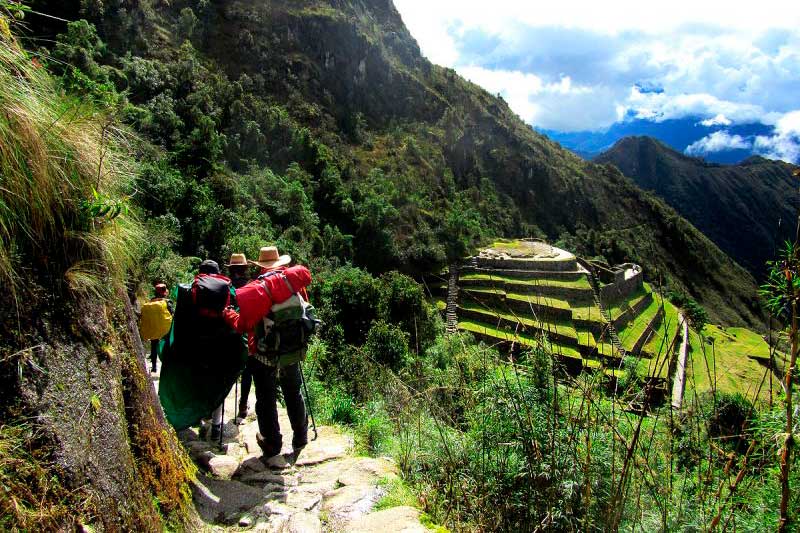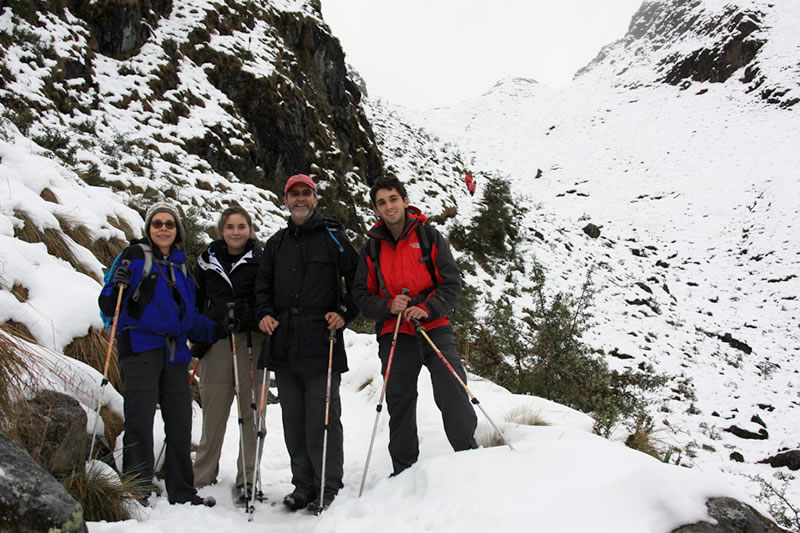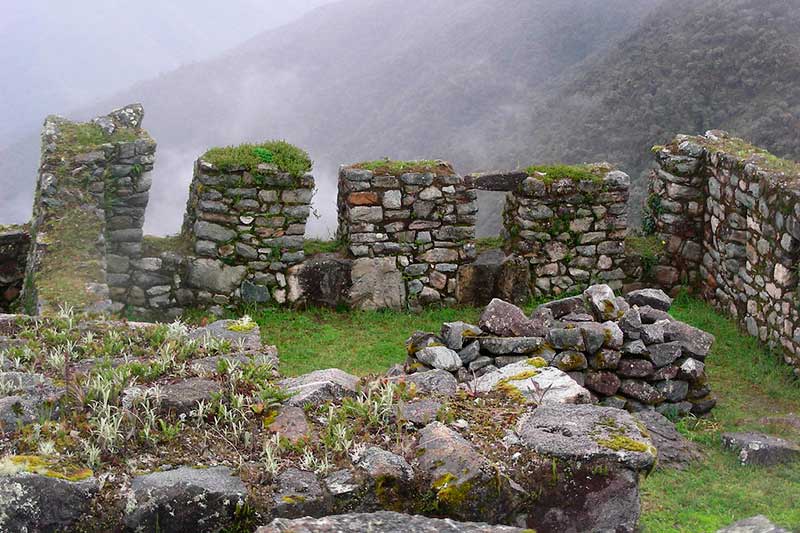The Inca Trail has a varied geography. It travels 32 kilometers during 4 days in which the climate goes from a mountainous cold to a tropical heat until finally arriving at Machu Picchu. In February, the rainiest month, the route remains closed due to track maintenance work. Finally, regardless of the weather, any day is ideal to do this famous hiking trail.

Inca trail in spring
All about the current climate of the Inca Trail
Perú, Machu Picchu
Salida del sol
Entrada del sol
- Direction of the wind
- Wind speed
- Wind degrees
- Humidity relative
- UV index
Perú, Machu Picchu
Salida del sol
Entrada del sol
Perú, Machu Picchu
- Direction of the wind :
- Wind speed :
- Wind degrees :
- Humidity relative :
- Chance of Rain :
- Direction of the wind :
- Wind speed :
- Wind degrees :
- Humidity relative :
- Chance of Rain :
- Direction of the wind :
- Wind speed :
- Wind degrees :
- Humidity relative :
- Chance of Rain :
Perú, Machu Picchu
Probabilidad de lluvia
Perú, Machu Picchu
| Day | Description | Max./Min | Chance of Rain | Humidity | Direction of the wind | Wind speed |
|---|
How is the weather during the Inca Trail?
The climate during the Inca Trail is varied, depending on the region in which the visitor is staying and camping. In general, the temperatures vary from 0ºC, at the highest point (the pass of the Dead Woman) to 22ºC. In Machu Picchu.
The final destination of the Inca Trail is Machu Picchu, which is located in a sub-tropical area. Geographically, the Inca city is located in the eco-region of the ‘yunga – Quechua’, which presents a warm sub-tropical climate with intense rains.
The common denominator to the lake of the route is the rains. The rainy temperature runs from November to April. Instead, the dry season is from May to October. Even so, rains can occur at any time, not only on the Inca Trail but throughout the Andes Mountains.
Finally, despite the variable weather, the hike is worth it. Within this territory there are archaeological monuments, mountains, rivers, lagoons and abundant flora and fauna, typical of the area (jungle eyebrow). Around this area there are 230,716,966 hectares, considered as a reserved area called “Buffer Zone”, with 38,448,106 hectares that includes the Historic Sanctuary of Machu Picchu.

Tourists enjoying the snow
Day 1
The walk begins at kilometer 82 of the railway that connects Ollantaytambo and Aguas Calientes. It ends at the Wayllabamba camp (3,057 meters above sea level), after 13 kilometers of walking.
The Wayllabamba camp, where the tourist will spend the night, has a temperate-cold climate, with minimum temperatures of 4ºC. And maximum of 20ºC. During the walk the average temperature is 12ºC. From January to March the rains are intense. Likewise, from May to August the days are sunnier, but the nights are colder.

Section of the Inca Trail
Day 2
On day 2 the walk begins at the Wayllabamba camp, from where you continue ascending until you cross the famous ‘Dead Woman’s Pass’ of the Inca Trail, the highest section of the trek located at 4,215 meters above sea level. Then the route continues until reaching the Pacaymayo camp, 3,600 meters above sea level. That day a total of 11 kilometers are covered.
The weather throughout the second day of hiking is cold most of the time. The temperature at the highest point (the Dead Woman’s Pass) varies from 0ºC. Up to 8ºC. At night, in the camp, the temperature can drop to 3ºC. From January to March the rains are frequent.
Day 3
On day 3, the route begins at the Pacaymayo camp, from where it descends for 16 kilometers until arriving at the Wiñay Huayna camp, in the jungle of Cusco, at 2,650 meters above sea level. That day the tour will be easier compared to the previous days.
The weather on the third day of hiking is more pleasant for visitors. The temperature during the route varies from 10ºC. Up to 18ºC. At night, in the Wiñay Huayna camp the average temperature is 13ºC.
Day 4
On the last day, only 3 kilometers are traveled from the camp and archaeological site of Wiñay Huayna to the archaeological site of Machu Picchu. Once in the Inca city, all the constructions of the famous archaeological site will be visited.
The climate in Machu Picchu is warm temperate. The temperature varies from 8ºC. (at night) up to 22ºC (during the day). Of course, the rains are more intense, especially in January, February and March. The rest of the year they are less frequent, but they can still happen any day of the year.
Tips
The weather during the four days you take the Inca Trail is variable, so it is recommended to wear warm as well as light clothing. Of course, good shoes are essential.
During the highest point of the trek, in the ‘Dead Woman’s Pass’, it is advisable to chew coca leaf (just as the Incas did hundreds of years ago). This way you will better resist fatigue but, above all, inclement weather and altitude.
Either with intense cold, in the rain or with a fervent and splendorous sun; the Inca Trail is worth it. Forget about natural fears and take this historic route.
By Inca Trail Machu Picchu - Last updated, 22-08-2024
Interested in the Inca Trail? Know more about Information Inca Trail!
- Inca Trail hike as a therapy to heal body and soul
- What is it like to camp overnight on the Inca Trail?
- Online availability Inca Trail to Machu Picchu 2025
- Sustainability tips for the Inca Trail
- How to get to Ollantaytambo?
- Physical preparation for the Inca Trail
